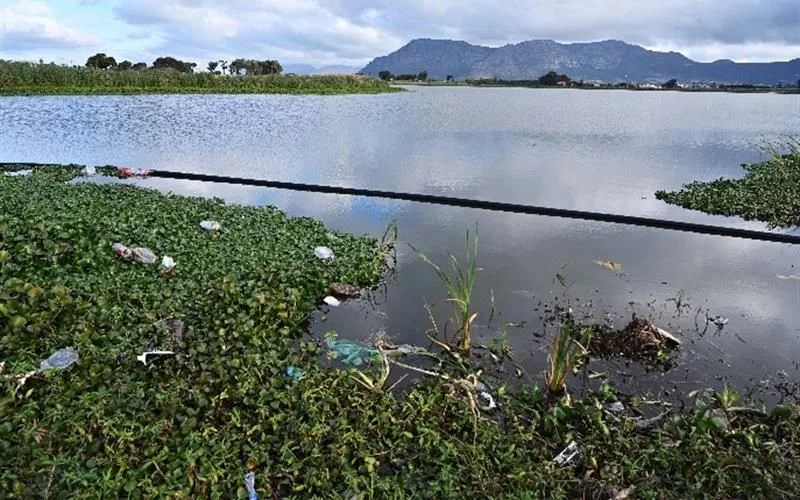The ocean around Blouberg Beach in South Africa has undergone a strange transformation in color, triggering a range of theories and discussions. Some blame pollution, while others suggest natural phenomena, such as sediment mixing or freshwater interacting with saltwater. Despite the ongoing mystery, the situation highlights the need to understand the interplay between human actions and nature’s reactions to preserve our ecosystems. The power of shared curiosity and the role of social media in generating crucial dialogues have also been emphasized.
What is causing the unusual colors of Blouberg’s ocean?
The cause of the unusual colors of Blouberg’s ocean remains a mystery, with theories ranging from pollution to natural phenomena such as sediment mixing with seawater and freshwater interacting with saltwater. The ongoing discussions have highlighted the need for understanding the interplay between human actions and nature’s reactions to preserve the fragile balance of our ecosystems. The power of shared curiosity has also been emphasized in generating crucial dialogues.
Section 1: The Enigma Unfolds
The scenic coastline of Blouberg has recently become the focal point of unsettling scrutiny. The waters surrounding this renowned South African beach have adopted a disturbing guise, inciting a whirlwind of conjecture across various online platforms. The changing hues, comparable to a painter’s palette in disarray, have provoked a multitude of theories and inquiries from the internet community.
The first theory pointed fingers at the human-induced aberration – pollution. The ocean was considered to be an unvoiced victim of untreated sewage, oil leakages, and industrial waste. This perspective demonstrated the harm inflicted by human neglect towards the natural world, transforming the ocean into a silent, tormented testimony.
Section 2: The Natural Phenomena
Conversely, a significant number of conjectures centered around potential natural causes. Some suggested that the unusual coloration was nothing more than sediment or water streaming down from the elevated regions and mixing with the sea. This explanation seemed plausible, especially considering the recent intense rainfall, invoking a colorful image of mountainous waterways converging with the ocean.
The phenomenon of freshwater interacting with saltwater was also scrutinized. This naturally occurring event happens when the lighter freshwater ascends over the denser saltwater. In return, the saltwater thrusts its way upstream along the seafloor, initiating an intriguing dance of densities. This blend can indeed cause a noticeable distinction in the appearance of the two water bodies, adding another dimension to the enigma.
Another naturally occurring incident that garnered attention was the earthquake that had transpired a few weeks earlier. Some theorized that geological disruptions could have agitated the seabed, altering the ocean’s typical color.
Section 3: The Ongoing Enigma
The mystery surrounding the ocean’s altered appearance around Blouberg remains unsolved despite the various theories. The sea near Blouberg has transformed into an open canvas, layered with diverse hypotheses. Each hypothesis, whether blaming pollution or attributing it to natural events, is a testament to the ocean’s adaptability and vitality.
More importantly, this situation has not only ignited discussions but also highlighted the continuous interplay between human actions and nature’s reactions. It has emphasized the need to comprehend these interactions in order to preserve the fragile balance of our ecosystems.
Section 4: The Power of Shared Curiosity
The tale of Blouberg’s sea has shed light on the interaction of human and natural factors, while also underscoring the influential role of social media in raising awareness and generating crucial dialogues. From the reverberations of debates on pollution to the exploration of natural phenomena, every disseminated image, theory, and question has contributed to a broader narrative.
The sea’s alarming appearance, although disturbing, has brought together individuals in their pursuit for knowledge, encouraging community learning and shared inquisitiveness. While the precise reason behind the change remains unknown, the ongoing dialogues harbor promise for increased awareness and understanding.
Section 5: The Larger Picture
In the broader perspective, the mystery of Blouberg’s sea serves as a small-scale representation of the wider world. It narrates a lively story of nature’s dynamism, human influence, and the power of collective curiosity, all emerging from the depths of the sea’s cryptic colors.
As we observe the sea near Blouberg, it’s essential to remember that it’s not solely about the theories. It’s about comprehending our world and our role within it. It’s about recognizing our influences and admiring nature’s reactions. Most importantly, it’s about learning from our collective inquiries and discoveries, one wave at a time.
-
What is causing the unusual colors of Blouberg’s ocean?
The cause of the unusual colors of Blouberg’s ocean remains a mystery, with theories ranging from pollution to natural phenomena such as sediment mixing with seawater and freshwater interacting with saltwater. -
What are some theories about the cause of the ocean’s changing colors?
Theories include pollution from untreated sewage, oil leakages, and industrial waste; sediment mixing with seawater; freshwater interacting with saltwater; and seismic activity. -
Why is the mystery of Blouberg’s sea significant?
The mystery highlights the need to understand the interplay between human actions and nature’s reactions to preserve our ecosystems. The power of shared curiosity and the role of social media in generating crucial dialogues have also been emphasized. -
What role has social media played in raising awareness about the mystery?
Social media has played a significant role in raising awareness and generating crucial dialogues about the mystery surrounding Blouberg’s ocean. It has encouraged community learning and shared inquisitiveness. -
What can we learn from the ongoing discussions about the mystery?
The ongoing discussions have emphasized the need to comprehend the interactions between human actions and nature’s reactions to preserve the fragile balance of our ecosystems. We can also learn from our collective inquiries and discoveries. -
What is the broader perspective of the mystery surrounding Blouberg’s ocean?
The mystery of Blouberg’s sea serves as a small-scale representation of the wider world, highlighting the dynamism of nature, human influence, and the power of collective curiosity. It reminds us to recognize our influences and admire nature’s reactions.












